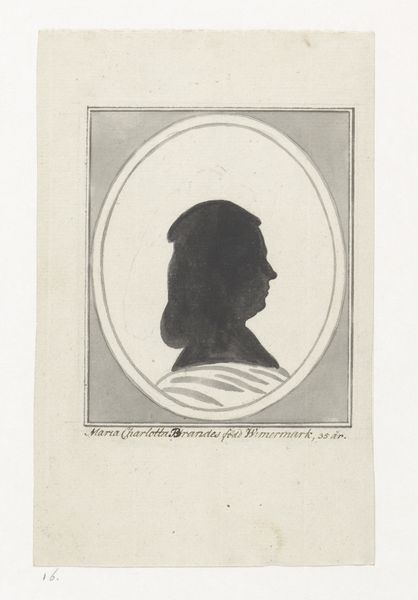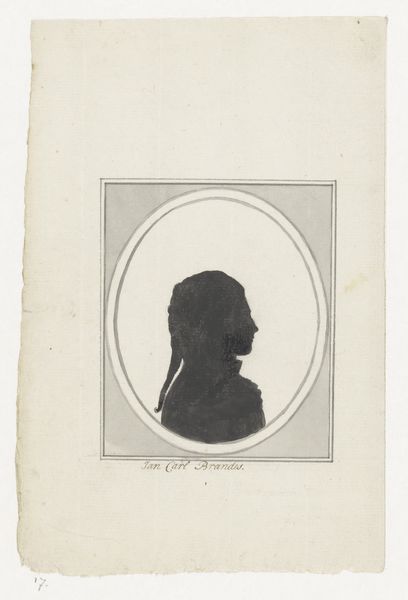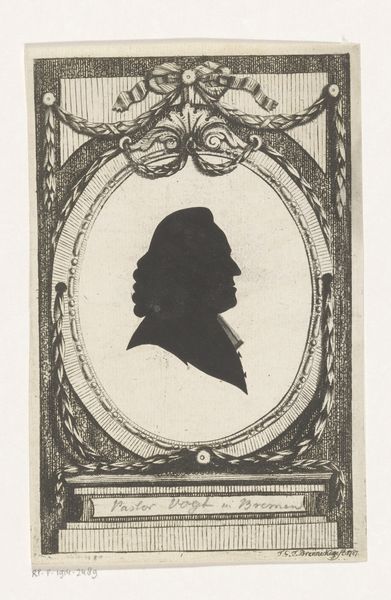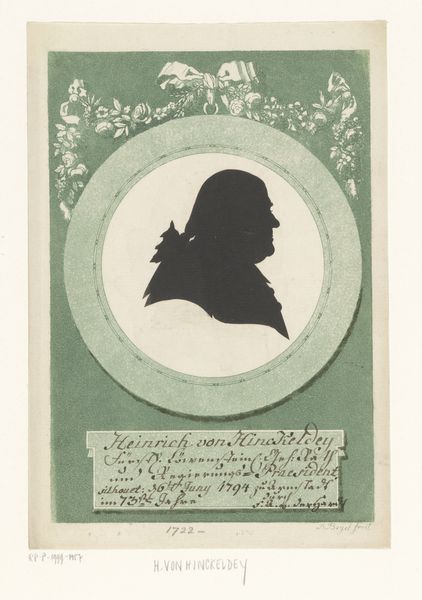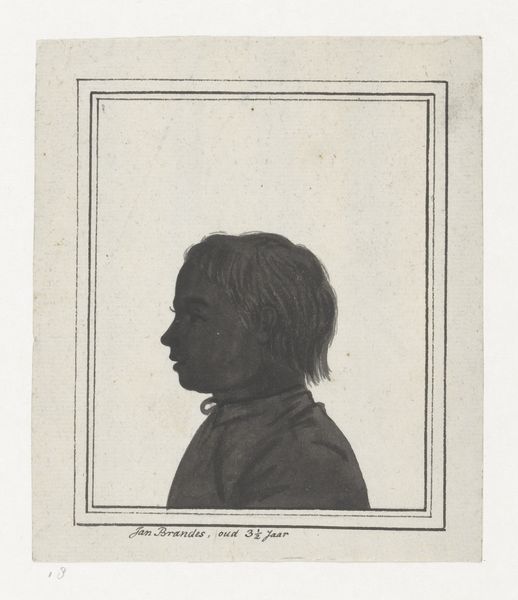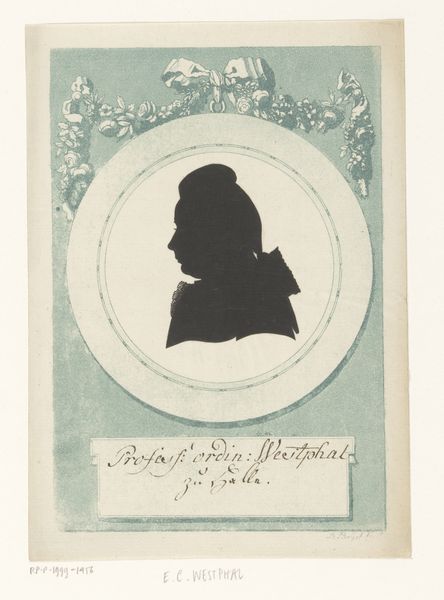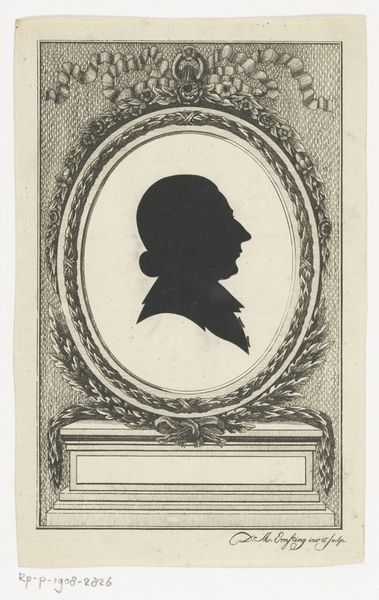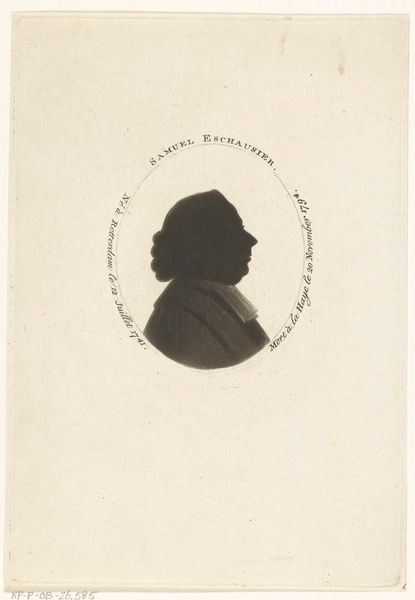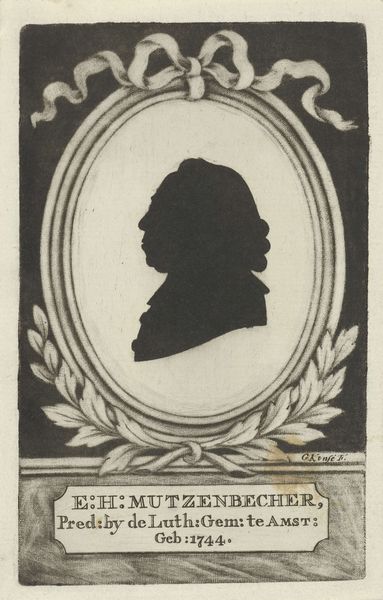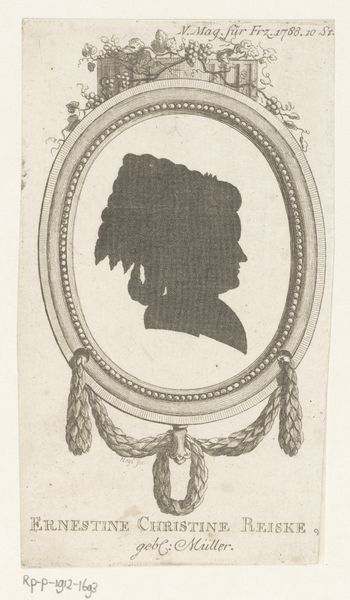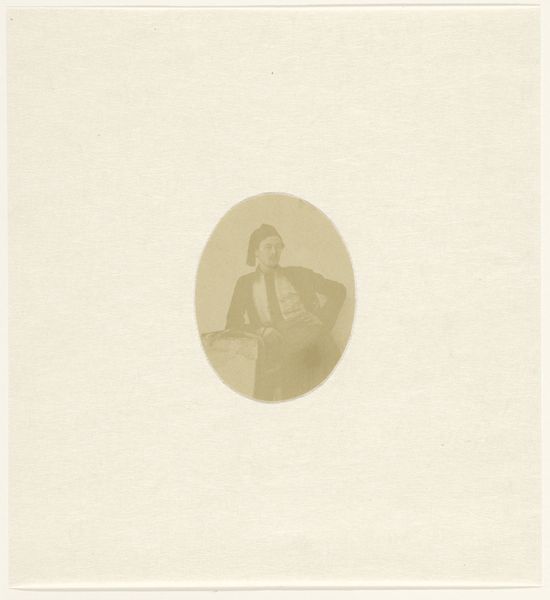
drawing, paper, ink
#
portrait
#
drawing
#
neoclacissism
#
paper
#
ink
Dimensions: height 195 mm, width 121 mm
Copyright: Rijks Museum: Open Domain
Curator: Looking at this silhouette portrait, one is immediately struck by the precision and economy of line. The starkness of the black ink against the off-white paper creates a very specific visual rhythm. Editor: And a social statement, perhaps? This is a drawing of Hedwig Catharina Wimermark created sometime between 1787 and 1808 by Jan Brandes, so it is being produced during a time of huge political upheaval. Who was she? Why was she important enough to be memorialized in such a way? Curator: A crucial point, definitely! In terms of the material handling, though, the execution here is wonderful. Observe how the artist uses varied pressure to define the edge of the silhouette, giving it a crisp yet subtle sense of depth and roundness. The use of line in the hair—it’s just phenomenal. Editor: True, the hair, while abstract, definitely commands attention and status. But consider the historical context. This woman is depicted against a very clean, classical oval. Brandes creates a portrait of this woman at a very volatile historical moment; perhaps it is a subversive statement itself that is playing on gender, on class, on social unrest. Curator: While I grant that context is indeed important, and agree the classical frame situates the subject within a specific intellectual tradition, one really cannot disregard the inherent value of the work's composition. It's really lovely. The way the artist balances the darkness of the silhouette with the lightness of the surrounding paper…it's all quite pleasing. Editor: It also makes me wonder, did Wimermark have a political voice of her own? I wonder if we can interpret this artwork as pushing against constraints for women. How does this image act within a historical timeline of shifting gender roles and power dynamics? The details are less important, to me, than its cultural value and its statement. Curator: I concede that its societal meanings cannot be disregarded. Looking closely at its construction, it definitely makes me re-evaluate how historical silhouettes and portraits more broadly really pushed and played with formal visual languages. Editor: Right. I hope listeners walk away today thinking about the myriad forces, visible and invisible, that give art historical context and continued meaning.
Comments
No comments
Be the first to comment and join the conversation on the ultimate creative platform.
